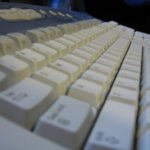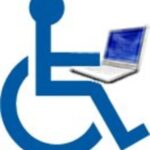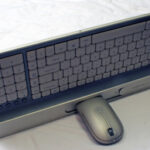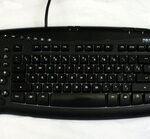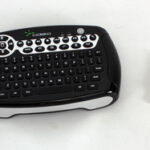My WPM is 116, or 106 with 4 errors, as verified by Work Force WV’s typing test. I was at WFWV on two separate days, and at least six other people tested while I was there. The highest WPM of those people was 37. She was middle-aged, and as a result had not grown up with typing classes. There was also a twenty-something girl there who simply lacked the practice, her WPM was 26. The other results were all under 50 WPM.
Why? The most obvious problem those people had was looking at the keyboard. This is very problematic when you’re supposed to read and type at the same time. You can see by my score that errors will bring your final score down. Make sure to check the screen routinely and correct as many errors within 4 characters as you can (beyond 4 characters, the error counts even if you fix it). Also, if you make a lot of errors by typing as fast as you possibly can, slow down a little with unfamiliar words.
Tip #1: Practice typing without looking at the keyboard by memorizing the keys until your fingers know where they are. For your convenience, keyboards have marked the home row keys with small raised dashes on the F and J keys. The home row is ASDFGHJKL; and this is where your fingers are meant to rest.
Tip #2: If you’re comfortable using your fingers on the “wrong” keys, or using only one shift key instead of both, do that. Nobody cares what fingers hit what keys as long as you’re got speed.
Tip #3: If you’re able to type without looking at the keys, your WPM will increase by 10-40 keystrokes per minute. Once you’ve mastered this skill, practice reading the copy (whatever you’re meant to be typing) without looking at the screen. Read through what you’ve typed after you finish and see how many errors you have. If you have a lot, you should try memorizing a sentence on the paper and then look at the screen as you type that sentence. Before you finish the last two words, look back at the paper to memorize the next sentence. If you’re bad at memorization, type a little slower so you can scan for obvious errors when switching between paragraphs or cells.
Tip #4: So you think using the numbers above the letters is sufficient? Not if you’re trying for a data entry job. I took the data entry test, and I must say, if there are no letters in a string of numbers it is much handier to use the numeric keypad. I realize this is not always an option if you’re using a laptop, but there is a numeric keypad over the letters UIO JKL and M. To use this, press the Num Lk key. It’s not quite the same as using a standard numeric keypad, but it will suffice. It’s a lot faster to use a numeric keypad for long strings of numbers or math.
Tip #5: Practice! Don’t just raise your WPM and consider it a permanent skill. You’ll become much slower if you don’t practice regularly. Also, please note that using a standard typewriter is not the same as using a keyboard, because keyboards don’t require you to hit the keys. A tap will suffice. All keyboards are slightly different, don’t be discouraged if you type a little slower on an unfamiliar keyboard.
Did you know the average WPM in America is 49? And finally, try testing yourself weekly at any or all of these sites:
http://www.typingtest.com/
http://www.calculatorcat.com/typing_test/ (note: the shorter the test, the higher your WPM; you can also hit tab+enter to end the test without using your mouse; tests do not count errors)
http://www.learntotype.org/ (note: offers links to numeric keypad typing tests and a typing certificate)
http://www.typingpal.com/test/ (note: offers link to “Productivity Calendar” to calculate the time you could save if you improved your typing speed)
